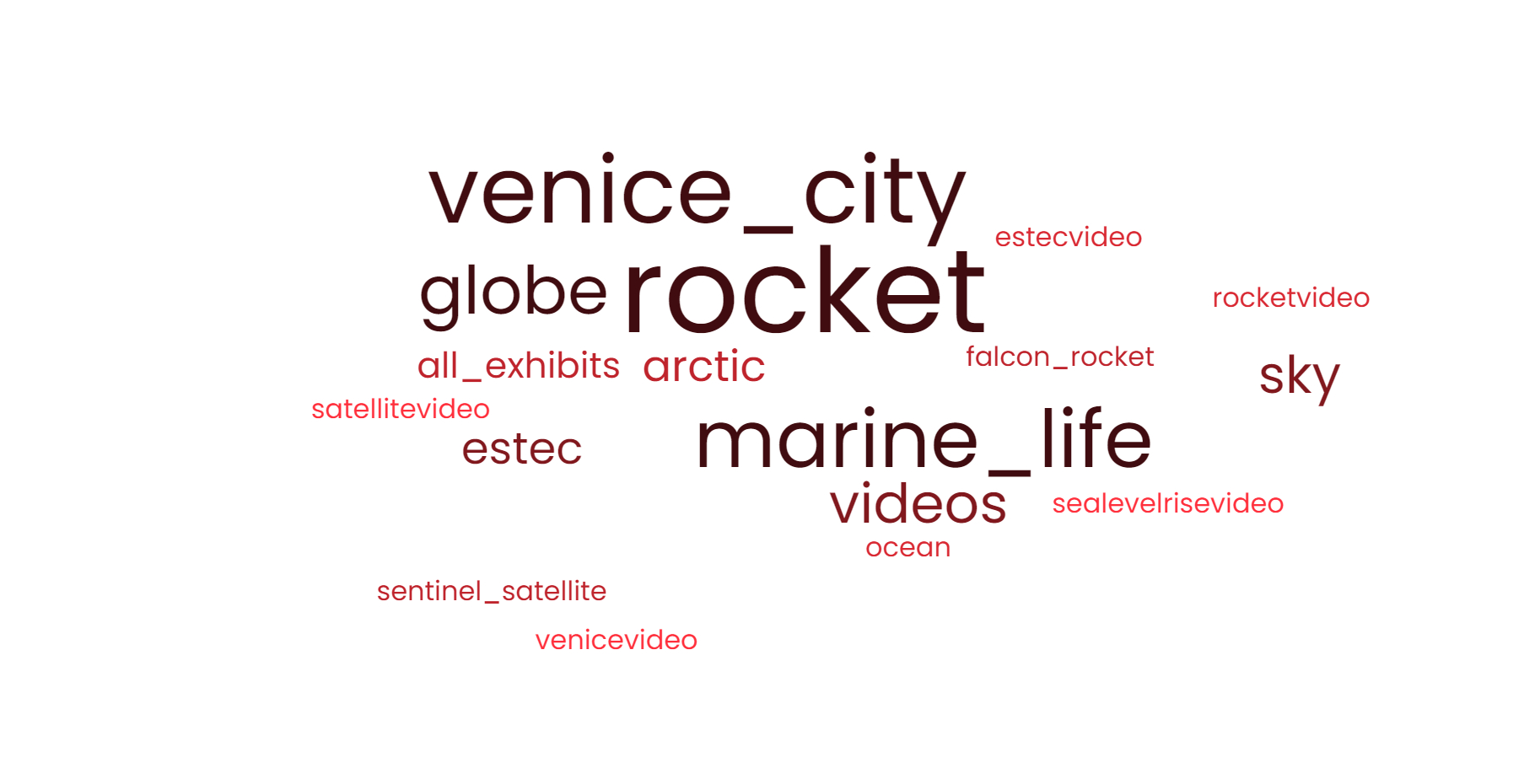RESULTS
Objective 1: DEVELOPMENT OF VIRTUAL GEOGRAPHIC LEARNING ENVIRONMENT
Through a comprehensive literature review and careful selection process, the COPERNICUS MUSEUM environment was established, focusing on Sea Level Rise and the Sentinel-6 mission. This contribution outlines the successful development and implementation of a virtual learning environment for the COPERNICUS MUSEUM virtual reality application, specifically designed for the Varjo XR-3 VR system. The VLE was designed to provide an immersive and interactive platform for geographic education, incorporating realistic 3D visualizations, accurate geographic data, and interactive features. The VLE has provided participants with an engaging and interactive platform to explore geographical concepts, fostering a deeper understanding of Sea Level Rise and the Sentinel-6 mission.

Final version of the COPERNICUS MUSEUM Immersive Virtual Geographic Learning Environment
Objective 2: INSIGHTS FROM EYE-TRACKING EXPERIMENT
The eye-tracking analysis provided valuable insights into participants' visual attention patterns within the virtual reality environment. The data revealed variations in attention across different exhibits, suggesting the importance of content and presentation in directing users' visual attention. Gender and age differences were observed, indicating that personal preferences and interests influence visual attention and engagement. The analysis of initial gaze dispersion also highlighted the influence of subtle hints or cues on participants' exploration patterns. The interviews with participants further enriched the understanding of their perceptions and experiences, providing suggestions for improvement.
Distribution of Visual Attention for AOIs

The data revealed that certain areas of interest attracted more attention than others. For example, the VeniceVideo exhibit had the highest TDT, indicating that participants spent more time focusing on this particular area. Similarly, the EstecVideo exhibit also captured a high amount of visual attention. On the other hand, the Rocket exhibit had the lowest TDT, suggesting that it attracted less attention from participants. One possible explanation for this observation could be the duration of the videos, as each of them had a duration more than one minute. This could be influenced by factors such as the video's content and the exhibition's location. These findings indicate that the content and presentation of different exhibits play a crucial role in directing users' visual attention.







